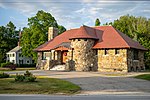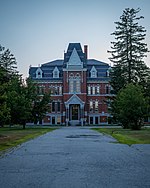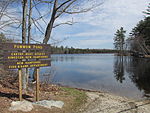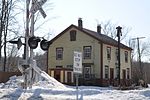First Universalist Church (Kingston, New Hampshire)
19th-century Unitarian Universalist church buildingsChurches completed in 1879Churches in Rockingham County, New HampshireChurches on the National Register of Historic Places in New HampshireKingston, New Hampshire ... and 4 more
National Register of Historic Places in Rockingham County, New HampshireQueen Anne architecture in New HampshireUnitarian Universalist churches in New HampshireUniversalist Church of America churches
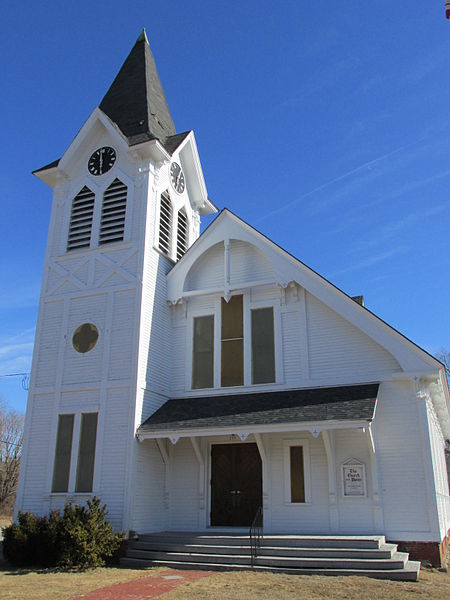
The First Universalist Church, known locally as the Church on the Plains, is a historic church building on Main Street in Kingston, New Hampshire. Built in 1879 to a design by the regionally prominent architect C. Willis Damon, it is a fine local example of Stick/Eastlake architecture. It was listed on the National Register of Historic Places in 1979, and is now owned by the local historical society.
Excerpt from the Wikipedia article First Universalist Church (Kingston, New Hampshire) (License: CC BY-SA 3.0, Authors, Images).First Universalist Church (Kingston, New Hampshire)
Main Street,
Geographical coordinates (GPS) Address Website External links Nearby Places Show on map
Geographical coordinates (GPS)
| Latitude | Longitude |
|---|---|
| N 42.933333333333 ° | E -71.054166666667 ° |
Address
The Church On The Plains
Main Street 151
03848
New Hampshire, United States
Open on Google Maps


